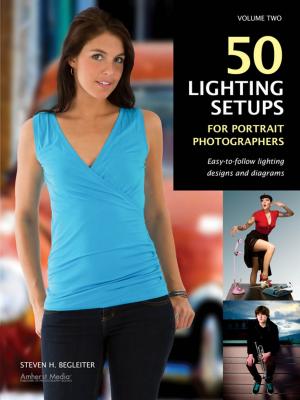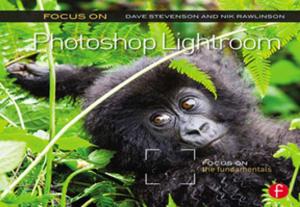3D Photography Stereo Base Made Easy
Nonfiction, Computers, Application Software, Computer Graphics, Art & Architecture, Photography, Equipment & Techniques, Techniques| Author: | Michael Beech | ISBN: | 9781311725639 |
| Publisher: | Michael Beech | Publication: | September 23, 2015 |
| Imprint: | Smashwords Edition | Language: | English |
| Author: | Michael Beech |
| ISBN: | 9781311725639 |
| Publisher: | Michael Beech |
| Publication: | September 23, 2015 |
| Imprint: | Smashwords Edition |
| Language: | English |
This book does not teach you how to take 3D Photos. What it does teach is how to make them great, by using the best separation or stereo base for every situation. In this easy to follow explanation, all the factors of stereo base calculation are described. Then you will learn some insider secret “keep-it-simple” tricks you can use instantly, in any situation, to figure out the perfect separation for the stereo.
It can be hard to get the stereo base right. For that reason it is important that you understand what happens in various scenes and why the stereo base sometimes has to be reduced by 50% or even doubled. Guess wrong and the base can be off by as much as a factor of 4 times, resulting in either flat looking stereos or, worse, stereos that are difficult or impossible to fuse.
So, you will discover these insider tips and secrets that will take away the stress and make it easy to select the right stereo base. You will also discover the reasons why your stereo base sometimes "seems right", but the finished stereo is a disaster. All you need to know is “How to Keep it Simple."
TABLE OF CONTENTS
Calculating the Stereo Base
What is Stereo Base?
The Separation Factor
Conditions Affecting the Stereo Base
Total Scene Depth
Focal Length of Viewing Method
Focal Length of the Camera Lens
Cropping Changes the Focal Length
Stereo Base for Dummies
Practical Application Example
The Bottom Line – Keep It Simple
Excessive Delta
Other Considerations
I'll get you started fast, but I don’t skip steps. So, we’ll start together at the very beginning and proceed to the end, covering every step. I never just tell you what to do, I always tell you why. There are certain simple tricks you can quickly learn to vastly improve your images and, once you know them, in no time at all you’ll be making magnificent, high quality stereos.
A bit about me; I have an extensive background in photography and 16 years in 3D photography. During that time I have written dozens of manuals, including 5 books on how to make outstanding, contest winning 3D images. I truly believe you will be thrilled with what you learn from my books. Teaching photography, particularly 3D photography, is a passion for me and I have devoted countless hours to working with those who wish to learn the subject.
BONUS Feature: The Stereo Photography Glossary is included, FREE
Practically a 3D photography course in itself, the Stereo Photography Glossary is a priceless addition to your knowledge base.
What others say:
“Thank you very much for this tutorial. While I “knew” some of it, your procedure makes thing[s] a whole lot clearer, ordered, and will probably end up making my alignments a lot better and “pain” free.”
Chuck Isdale
You are offering new stereographers a wonderful helping hand. I have just read your first chapter and it is a clear explanation.”
Peter Blyth
I want to thank you for your excellent tutorials on alignment using SPM . . . Your tutorial makes it possible to harness the wonderful tools it provides . . . I am anxious to learn more and you are an excellent teacher. I feel now that I can make my images do exactly what I want. Thanks again for this excellent tutorial.”
Dale Smith
I'm back. I found your Digital 3D Stereo Guide so well written and so informative I had to come back for more.”
Best regards, Barry
~~o~~
You will learn the exact steps required to get you up to speed fast. The information here is presented in a cut-to-the-chase, no bull, right-to-the-point manner. I describe things clearly, concisely and without any formulas or obscure diagrams. Techno-speak is not spoken here.
Just to be clear, this book is intended to teach those who can already take 3D photos how to quickly figure the best separation or stereo base to use between the left and right photos of the stereo pair.
Plus, as a bonus, you will have access to many tips, secrets, and more on my website.
Let’s go make some amazing3D’s!
Mike Beech
This book does not teach you how to take 3D Photos. What it does teach is how to make them great, by using the best separation or stereo base for every situation. In this easy to follow explanation, all the factors of stereo base calculation are described. Then you will learn some insider secret “keep-it-simple” tricks you can use instantly, in any situation, to figure out the perfect separation for the stereo.
It can be hard to get the stereo base right. For that reason it is important that you understand what happens in various scenes and why the stereo base sometimes has to be reduced by 50% or even doubled. Guess wrong and the base can be off by as much as a factor of 4 times, resulting in either flat looking stereos or, worse, stereos that are difficult or impossible to fuse.
So, you will discover these insider tips and secrets that will take away the stress and make it easy to select the right stereo base. You will also discover the reasons why your stereo base sometimes "seems right", but the finished stereo is a disaster. All you need to know is “How to Keep it Simple."
TABLE OF CONTENTS
Calculating the Stereo Base
What is Stereo Base?
The Separation Factor
Conditions Affecting the Stereo Base
Total Scene Depth
Focal Length of Viewing Method
Focal Length of the Camera Lens
Cropping Changes the Focal Length
Stereo Base for Dummies
Practical Application Example
The Bottom Line – Keep It Simple
Excessive Delta
Other Considerations
I'll get you started fast, but I don’t skip steps. So, we’ll start together at the very beginning and proceed to the end, covering every step. I never just tell you what to do, I always tell you why. There are certain simple tricks you can quickly learn to vastly improve your images and, once you know them, in no time at all you’ll be making magnificent, high quality stereos.
A bit about me; I have an extensive background in photography and 16 years in 3D photography. During that time I have written dozens of manuals, including 5 books on how to make outstanding, contest winning 3D images. I truly believe you will be thrilled with what you learn from my books. Teaching photography, particularly 3D photography, is a passion for me and I have devoted countless hours to working with those who wish to learn the subject.
BONUS Feature: The Stereo Photography Glossary is included, FREE
Practically a 3D photography course in itself, the Stereo Photography Glossary is a priceless addition to your knowledge base.
What others say:
“Thank you very much for this tutorial. While I “knew” some of it, your procedure makes thing[s] a whole lot clearer, ordered, and will probably end up making my alignments a lot better and “pain” free.”
Chuck Isdale
You are offering new stereographers a wonderful helping hand. I have just read your first chapter and it is a clear explanation.”
Peter Blyth
I want to thank you for your excellent tutorials on alignment using SPM . . . Your tutorial makes it possible to harness the wonderful tools it provides . . . I am anxious to learn more and you are an excellent teacher. I feel now that I can make my images do exactly what I want. Thanks again for this excellent tutorial.”
Dale Smith
I'm back. I found your Digital 3D Stereo Guide so well written and so informative I had to come back for more.”
Best regards, Barry
~~o~~
You will learn the exact steps required to get you up to speed fast. The information here is presented in a cut-to-the-chase, no bull, right-to-the-point manner. I describe things clearly, concisely and without any formulas or obscure diagrams. Techno-speak is not spoken here.
Just to be clear, this book is intended to teach those who can already take 3D photos how to quickly figure the best separation or stereo base to use between the left and right photos of the stereo pair.
Plus, as a bonus, you will have access to many tips, secrets, and more on my website.
Let’s go make some amazing3D’s!
Mike Beech















